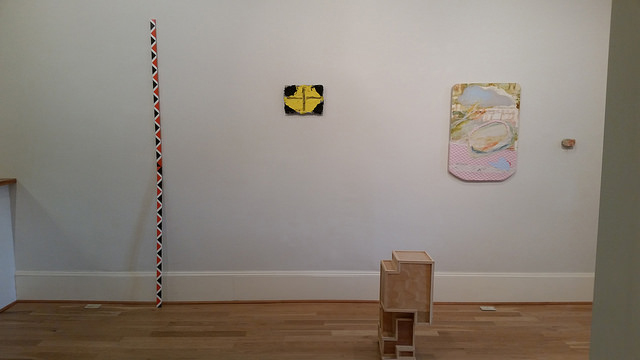
From left to right: Patricia Zarate, “Zig Zag, Step, Side (brown, orange),” 2011; Julie Torres, “Room with A View,” 2015; Norm Paris, “Crate For Sculpture of Kyrie Irving,” 2012; Bonny Leibowitz, “Sweet Dreams,” 2015.
The collective behind Brooklyn’s Transmitter gallery has partnered with Guest Spot @ The Reinstitute in Baltimore to present the exhibition Self-Organized — Aesthetics Politics of the Artist Run. The show ambitiously offers a cross-section of work by twenty-nine artists who have co-founded or directed art spaces or publications in New York, Baltimore, Latin America, Holland, and beyond. Self-Organized opened at Guest Spot’s Calvert Street gallery; in conjunction with this exhibition, the gallery hosted a sister-booth at the Artist-Run Art Fair, located just a few blocks away.
Overall, the show felt timely—part of its thesis was considering the rise of artist-run venues as reactions to institutional or commercial contexts that have lost the trust and/or affections of many culture-makers. (A history of artist-run spaces across the nation definitely exists in this century; for a quick example, see the Artists Run Chicago exhibition in 2009.) Here in Baltimore, there’s an obvious correlation to the relative triumph of smaller DIY endeavors in the shadow of Artscape proper—where actual content is typically drowned-out in a sea of sponsors, spectacle, and obligatory fun for the whole family.
Interestingly though, the visual artists in Self-Organized seemed less overtly concerned with institutional critique or political statements in the exhibition text or the DIY publications available in the gallery’s pop-up library would suggest. Perhaps that’s indicative of a major, though often-overlooked quality of artist-run platforms: the freedom to focus on art for art’s sake. There’s an increasing expectation that institutions and more established non-profits must justify their existence with socially-engaged, politically relevant, or even vaguely charitable programming. The artwork here, by comparison, is almost introverted. That’s not necessarily a bad thing—if anything, it’s refreshing to see ontological concerns, process-based studio practices, and, well, aesthetics contextualized as a set of “politics.”
Most people in the gallery assumed Mathew Mahler’s Liquidity II was a painting. In reality, it’s a vinyl print with transparent texture brushed over it in acrylic gel medium—complete with digital artifacts such as faint pixelation and Photoshop-looking smudges. I like the pairing with Torres’s Free Falling, which similarly uses globs of acrylic to blur distinctions between media. In neither piece is the paint used to create an image per-se, rather it brings a surface into the realm of 3D. In Free Falling, the paint supports the panel, an inversion of the materials’ usual relationship.
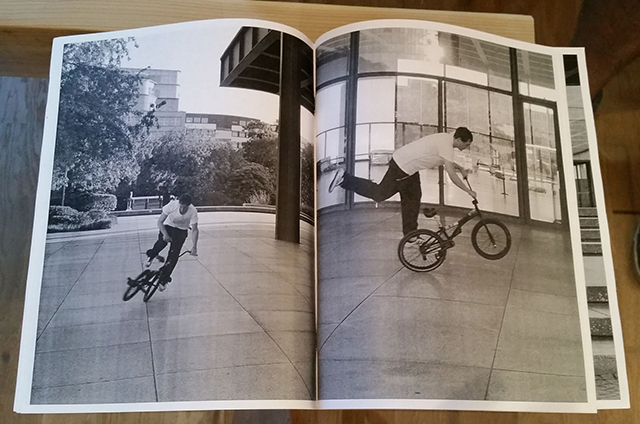
Phillip Tomaru, of the publishing/curatorial group Arts & Sciences documents scenes within gorgeously sculptural midcentury modern buildings.
There’s an obsessive quality bordering on nerdery with Phillip Tomaru’s work. He photographs both iconic and overlooked International Style buildings for accessible, inexpensive multiples that the collective Arts & Sciences Projects releases. I really like these—the early practitioners of the International Style believed mass production could make good design and quality architecture available to the masses. These seem to follow that ideal. Although Arts & Sciences Projects is active internationally, their first project was a series of film screenings called Building Character; it was organized by Tomaru in 2010, and took place in a Baltimore condominium designed by Mies van der Rohe.
I said earlier that apart from the publications, little of the work in Self-Organized read as overtly political or an act of institutional critique. Lauren Adams is the exception. This piece is from a series we saw last year at the Sondheim Finalist exhibition at the Walters Art Museum. Adams researched the history of slavery in museums—from depictions similar to Fred Wilson’s Mining the Museum to the contemporary labor conditions at the under-construction Guggenheim Abu Dhabi. Aesthetically, this isn’t a very strong piece on its own (when shown together, the paintings on paper read more successfully like pages from an in-progress notebook for a research project), but it deserves recognition for calling out—like Gulf Labor and other groups have as of late—how institutions comply with human-rights abuses committed by their benefactors.

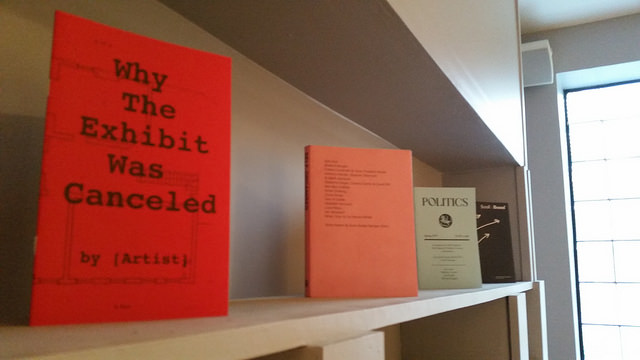
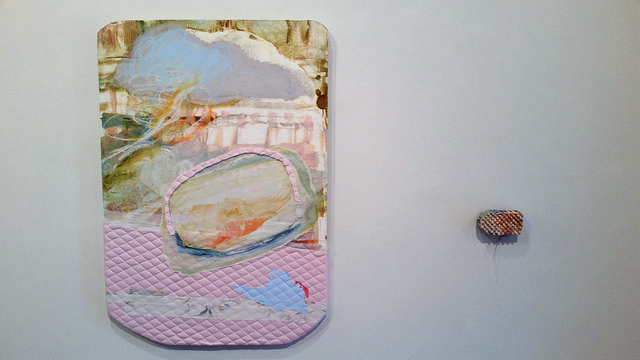


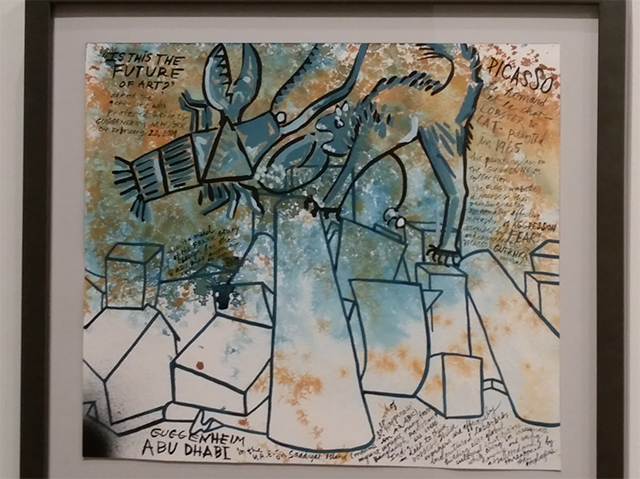

{ 1 comment }
It’s the past, present and future
Comments on this entry are closed.